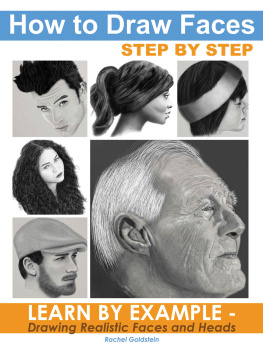Copyright 2009, 1978 by the Virginia Satir Global Network Foreword copyright 2009 by Mary Ann Norfleet
All rights reserved.
Published in the United States by Celestial Arts, an imprint of the
Crown Publishing Group, a division of Random House, Inc., New York.
www.crownpublishing.com
www.tenspeed.com
Celestial Arts and the Celestial Arts colophon are registered trademarks of Random House, Inc.
Library of Congress Cataloging-in-Publication Data
Satir, Virginia.
Your many faces: the first step to being loved / Virginia Satir; foreword by Mary Ann Norfleet.New ed.
p. cm.
Summary: A self-help guide about understanding and accepting the many facets of ones own personality, written by a distinguished American psychotherapistProvided by publisher.
1. Self-perception. 2. Self-actualization (Psychology) I. Title.
BF697.5.S43S38 2009
158.1dc22
2009024086
eISBN: 978-0-307-79134-4
v3.1
To all my friends, colleagues, and other people in the world,
who I know have marvelous possibilities ahead of them.
CONTENTS
THE THEATER OF THE INSIDEACT I
Lifting the Cover
INTERMISSION
Breaking Out of Your Emotional Jail
THE THEATER OF THE INSIDEACT II
Who Is in Charge?
ACKNOWLEDGMENTS
I wish to acknowledge and thank all those who gave their time to read and respond to this effort in order to make this book clear and more readable, including Newell Weed, Wheelock Whitney, Lois James, Trae Boxer, Keith Berwick, Johanna Schwab, Jackie Schwartz, Anne Robertson, Lucille Hurwitz, Mary Jo Bulbrook, Ruth Turpin, Mary Harrell, Ruth Nicholls, Leonard and Merle Stine, Jane Levenberg Gerber, Yetta Bernhard, Vernon Sparks, Jane Donner, Vince Sweeney, Rachel Michaelson, Shauna Adix, Ramona Adams, Sally Pierone, Fred Duhl, and especially to John Levy, who, though startled to receive the manuscript, responded in his own inimitable way.
A special thanks to Hal Kramer, my publisher, for his constant encouragement to complete this project, and to my editor, Joycelyn Moulton, for her patience and creativity.
FOREWORD
Virginia Satir was the first renowned therapist I saw live as a young psychologist in training. I was immediately impressed by her charisma, her profound respect for individuals and families, and her emphasis on encouraging people to reach their full potential. She was a superb teacher and lecturereven when she spoke to a large audience, she radiated warmth and enthusiasm and made people feel like she was engaging them in a personal conversation.
As a pioneering family therapist, Satir thought that it was crucial to work with the entire family conjointly, together in one room. She viewed the family as a system that is more than the sum of its parts, in which each member influences the others in a dynamic, interactional context. However, she was acutely aware that a person does not stop being an individual just because he or she is part of a family. She believed in the uniqueness of every person and was interested in empowering individuals and families to become their own architectsto grow and thrive by developing their strengths, improving their self-esteem, and striving to become a balanced, harmonious whole. She encouraged people to think of themselves as living mobiles, constantly balancing and rebalancing their many faces.
Steeped in the humanistic traditions that psychologist Abraham Maslow wrote about starting in the 1950s, Satir was vitally interested in facilitating the growth and happiness of individuals by encouraging them to discover and nurture their unique capabilities. She firmly believed in helping people establish rich, fulfilling relationships and improve the quality of their everyday lives. She was one of the first psychotherapists to apply concepts that are now recognized as the core principles of positive psychology, a branch of psychology that officially emerged in 1998, ten years after her death.
Upon its inception in 1959, Satir became the first director of family therapy training at the Mental Research Institute (MRI) in Palo Alto, California. Founded by psychiatrist Don Jackson, MRI was the foremost establishment in the world where the budding field of family therapy developed and came of age. In addition to Satir, Jackson recruited other prominent researchers and clinical innovators, including Gregory Bateson, Jay Haley, Paul Watzlawick, and John Weakland. In 1962 MRI received the first National Institute of Mental Health grant to train family therapists. Satirs first book, Conjoint Family Therapy, was published in 1964 and was based on the training manual she created for this educational program.
The 1960s were an exciting time when new therapeutic approaches were emerging and proliferating, and Satir was eager to participate in this wave of experimentation. In 1966 she moved down the California coast to the Esalen Institute in Big Sur, where she became director of training. Esalen was a multidisciplinary humanistic laboratory for change, a place for personal retreat and renewal, and a nonjudgmental environment in which alternative approaches to psychological transformation (which might not be welcomed in academic settings) could be explored. Promoting an eclectic application of philosophies, Esalen programs utilized both Eastern and Western techniques, such as relaxation, meditation, and yoga, as well as Gestalt therapy, visualization, art therapy, and other inventive methodologies. Satirs compassion, curiosity, and interest in helping people realize their full potential made her a natural fit for this position at the nexus of the human potential movement.
In Your Many Faces, Virginia Satir draws on her creativity and experience with role-playing, psychodrama, and other innovative techniques to help readers explore the various aspects of their personality, inviting them on a fantasy tour of their own Theater of the Inside. She asserts that writing out our goals, developing a personal collage of our many faces, and taking concrete actions can serve as methods of self-discovery and self-acceptance, allowing us to live more satisfying and fulfilling lives. These were new methods when she wrote this book over thirty years ago. Now they are widely used and accepted contemporary tools for helping people clarify and achieve their objectives. Satir was ahead of her time, and she left an enduring legacy that lives on through her writing and family therapy methods, which are practiced by psychotherapists and taught in training institutes throughout the world.
Mary Ann Norfleet, PhD
Senior Research Fellow
Mental Research Institute
Palo Alto, California
www.mri.org
PREFACE
The Adventure of Discovering the Miracle within You
I want to get you excited about who you are, what you are, what you have, and what can still be for you. I want to inspire you to see that you can go far beyond where you are right now. This book is my invitation to you to have a very special experience with yourselfone that can open up all kinds of new possibilities for you.
I can offer this invitation because you are a member of the human race, and as such, you are a miracle. Furthermore, you are a one-of-a-kind miracle. Lets consider the evidence: Each fingerprint on every human being is different. Imagine, four billion people now present in the world, plus all those who have come before and will come in the future. All have their own unique fingerprints. There are no duplicates. How could anyone think up so many variations? That really boggles my mind. And yet it is an indisputable fact. Each of us is different.











